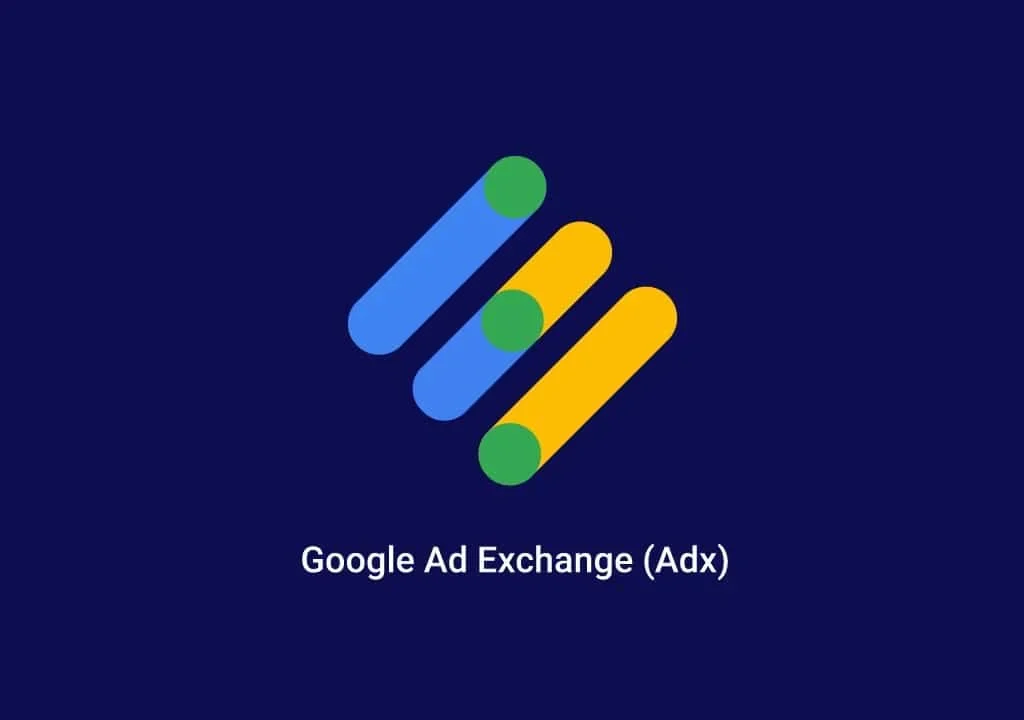Understanding Google AdX
Google AdX, also known as Google Ad Exchange, marks a cornerstone in the realm of digital advertising. Originating from the DoubleClick Ad Exchange, established in 1996, Google’s acquisition in 2008 revolutionized the way ad spaces are bought and sold. Google AdX leverages real-time bidding technology, enabling publishers to auction their advertising spaces in real-time, ensuring they achieve the highest possible revenue.
This platform stands out by creating an efficient, dynamic marketplace where advertisers can bid for ad spaces in real-time, ensuring that publishers can fill their available slots at optimal prices. The approach fosters a mutually beneficial environment: publishers gain access to a broader advertiser base and maximize their ad revenue, while advertisers enjoy a wider selection of sites and advanced targeting capabilities.
Google AdX is distinguished by its wide applicability, catering not only to web publishers but also to mobile app developers, unlike its counterparts Google AdSense, which is tailored primarily for website monetization, and AdMob, which focuses on mobile apps. Publishers pondering over Google AdX versus AdMob will find detailed comparisons particularly enlightening.
A real-life endorsement can significantly underscore the platform’s value. Consider the testimony from Clinton Weiss, a publisher in the United States: “Endorsing Publift is a no-brainer for me. Their partnership has been invaluable, enabling me to concentrate on enhancing my websites while they adeptly manage the adverts. The standout for me is their exemplary customer service – it’s reassuring to know I can easily contact someone and receive prompt, helpful responses.”
Delineating the nuances between Google AdX and other advertising solutions provided by Google is vital for publishers aiming to optimize their revenue streams. While Google AdX presents a more sophisticated route for monetization, it offers considerable rewards for those ready to navigate its complexities.
How Does Google AdX Work?
The mechanism behind Google Ad Exchange (AdX) is designed to optimize the selling and buying of ad inventory through an innovative process known as real-time bidding (RTB). This approach transforms traditional advertising transactions into a dynamic, automated auction, where advertising spaces are sold in milliseconds.
The process begins when a user visits a website connected to Google AdX. Instantly, the website sends out a bid request that includes various details like the user’s demographic information, browsing history, and the context of the webpage. Advertisers then evaluate this information and submit their bids in real-time. The highest bidding advertiser wins the ad space, and their ad is immediately displayed to the user.
Google AdX distinguishes itself with three primary auction types:
- Open Auction: This is the most common type of auction on AdX and is accessible to all advertisers and publishers. In an open auction, publishers remain anonymous, creating a competitive marketplace where the highest bid typically wins.
- Private Auction: These are exclusive auctions where publishers invite a select group of advertisers to bid on their inventory. Unlike open auctions, private auctions provide publishers with greater control over who can buy their ad space, often leading to more favorable deals and partnerships.
- Preferred Deals: Before inventory is available in the open or private auctions, publishers can negotiate deals directly with advertisers. These arrangements allow publishers to secure guaranteed prices for their ad spaces, while advertisers gain exclusive access to premium inventory.
Navigating and optimizing a Google AdX account requires more sophistication than managing an AdSense account. Publishers must balance various factors, such as setting appropriate floor prices, to avoid underselling their inventory or scaring away potential advertisers with overly high rates. Consequently, managing an AdX account typically demands a dedicated team or an external agency specializing in ad operations.
Moreover, strategic decisions made within Google AdX can significantly impact a publisher’s advertising revenue. For instance, incorrectly setting the floor price too high can result in lost revenue opportunities, as advertisers may bypass overpriced inventory for more cost-effective options.
What Is Google AdSense?
Google AdSense represents a more straightforward avenue for publishers to monetize their websites. This platform enables the placement of content-related advertisements on their sites, thereby allowing publishers to earn revenue on a per-click or per-impression basis. AdSense simplifies the process of ad management by automating the match between the ads and the site’s content and audience.
The core functionality of AdSense lies in its ability to serve contextual ads. By analyzing the content of a website and understanding its audience, AdSense ensures that the ads displayed are relevant to the visitors’ interests. This relevance increases the likelihood of user engagement, thereby enhancing the potential for revenue.
Setting up Google AdSense is relatively simple, making it an attractive option for publishers of all sizes. The entry barrier is low: once a website is deemed compliant with AdSense policies, the publisher can start displaying ads almost immediately. This ease of use has contributed significantly to AdSense’s popularity among smaller publishers who may not have the resources for a dedicated ad sales team.
Despite its simplicity, optimizing AdSense performance can still require expert insight. Publishers may need to experiment with different ad formats, placements, and strategies to maximize their earnings. However, the platform provides various tools and reports to help publishers track performance and make informed decisions.
The integration between AdSense and other Google products, such as Google Ads, further streamlines the advertising process. Advertisers bidding on Google Ads can have their campaigns automatically extended to relevant AdSense websites, expanding their reach and providing publishers with a larger pool of potential ads to display.
While Google AdSense offers a user-friendly platform for monetizing online content, publishers should remain proactive in optimizing their ad placements and monitoring their site’s performance to ensure they are maximizing their potential revenue.
Google AdX vs Google AdSense: Understanding the Key Differences
When deciding between Google AdX and Google AdSense, publishers must consider their unique needs, resources, and goals. Although both platforms serve the primary purpose of monetizing digital content, they cater to different types of publishers and offer distinct advantages.
1. Functionality and Access to Advertisers: Google AdX operates as an ad exchange, a marketplace for buying and selling ad inventory across multiple networks. This setup provides publishers access to a larger pool of advertisers and potentially higher revenues due to the competitive bidding process. In contrast, Google AdSense functions as an ad network, matching publishers’ content with relevant ads from a more limited set of advertisers. While AdSense is simpler to use, it may not yield the same revenue potential as AdX due to its more restricted advertiser base.
2. Control Over Ad Inventory: AdX offers publishers greater control over their ad inventory. They can set minimum prices (floor prices), choose which ads to display, and negotiate directly with advertisers through preferred deals and private auctions. This level of control is particularly beneficial for larger publishers with established brands and specific advertising standards. On the other hand, AdSense provides a more automated approach, with less granular control over ad prices and placements but a more straightforward setup process ideal for smaller publishers or those with less advertising experience.
3. Revenue Potential: Due to its broader range of advertisers and real-time bidding environment, AdX generally offers higher revenue potential compared to AdSense. Publishers with significant traffic and high-quality content can leverage AdX to maximize their ad revenue through competitive auctions. However, AdSense can still be a lucrative option, especially for smaller publishers or those just starting out, thanks to its ease of use and lower entry barriers.
4. Publisher Eligibility: AdSense is known for its accessibility, welcoming publishers of various sizes and traffic levels. This inclusivity makes it an appealing starting point for new or smaller content creators looking to monetize their sites. Conversely, Google AdX is tailored for larger publishers with substantial traffic volumes and ad inventories. Access to AdX often requires meeting specific eligibility criteria or going through a certified Google partner.
5. Ad Quality and Brand Safety: Both platforms maintain high standards for ad quality and brand safety, but AdX typically involves a more rigorous vetting process for both publishers and advertisers. This scrutiny ensures that ads meet higher quality standards, which can be crucial for publishers concerned about maintaining their site’s reputation and user experience.
What Is Google Ad Manager?
In the complex world of digital advertising, Google Ad Manager stands out as a comprehensive ad management platform that combines the features of both AdSense and Ad Exchange. Launched as a rebranding of Google’s previous ad server and SSP solutions, Ad Manager is designed to streamline the ad management process, offering publishers a unified platform to sell, manage, and optimize their ad inventory.
Google Ad Manager acts as a control center for publishers, enabling them to manage all aspects of their digital advertising. From direct sales to programmatic deals, it supports a range of advertising formats across different channels, including web, mobile, and video. The integration of AdSense and AdX into Ad Manager allows publishers to leverage the best of both worlds: the simplicity and accessibility of AdSense and the advanced features and higher revenue potential of AdX.
Key Features of Google Ad Manager:
- Unified Platform: Consolidates various advertising services under one roof, making ad management more efficient and less fragmented.
- Advanced Targeting and Optimization: Offers sophisticated tools to target specific audiences and optimize ad performance, leading to better user experiences and increased revenues.
- Flexibility and Control: Provides publishers with the flexibility to manage direct deals and programmatic sales, along with detailed controls over ad placements and pricing.
For publishers interested in using Google Ad Manager, the entry requirements are more stringent than for AdSense alone. Typically, access to this platform is reserved for larger publishers or those with a significant amount of ad inventory. However, once onboarded, publishers can significantly enhance their ad operations, streamline their workflows, and potentially increase their advertising revenue.
How Authorized Buyers Work With Google Ad Manager
Google’s Authorized Buyers program is another facet of its advertising ecosystem, aimed at connecting publishers with a global network of advertisers and agencies. Within Google Ad Manager, Authorized Buyers can bid on publishers’ inventory in real-time, competing alongside other programmatic buyers and direct advertisers.
This system benefits publishers by expanding their reach to a wider array of potential buyers, thus driving up competition and potentially increasing ad revenue. Authorized Buyers, which include ad networks, trading desks, and demand-side platforms (DSPs), have the opportunity to access premium inventory on reputable sites, enabling them to place their ads in front of targeted, engaged audiences.
For publishers, working with Authorized Buyers means tapping into a vast pool of advertising dollars and leveraging Google’s extensive ad tech to maximize fill rates and monetization. It’s a step up from basic AdSense, offering more control and higher revenue prospects, albeit with increased complexity and management requirements.
Conclusion: AdX or AdSense — Which Should I Choose?
Deciding between Google AdX and Google AdSense ultimately hinges on your specific needs as a publisher. If you’re just starting out or have a smaller site, Google AdSense offers an accessible and user-friendly way to begin monetizing with minimal hassle. It’s an excellent entry point into the world of online advertising, providing reliable tools and a trusted network of advertisers.
For larger publishers with significant traffic and a dedicated ad operations team, Google AdX presents a more advanced solution. It offers higher revenue potential through access to a larger pool of advertisers and more sophisticated auction dynamics. When combined with Google Ad Manager, AdX can significantly boost a publisher’s advertising capabilities and earnings.
Regardless of which platform you choose, the key to success lies in continuous optimization and engagement with your ad operations. Monitoring performance, experimenting with different strategies, and staying updated on digital advertising trends will help you maximize your revenue and ensure a positive experience for your users.
Frequently Asked Questions (FAQs)
Q1: Can small publishers use Google AdX? A1: Google AdX is generally targeted towards larger publishers with significant traffic and a substantial amount of ad inventory. However, smaller publishers can access AdX through third-party partners or networks that aggregate smaller inventories for the AdX platform.
Q2: Is Google AdSense free to use? A2: Yes, Google AdSense is free to sign up for and use. Publishers can earn money by placing ads on their site and are paid for clicks or impressions on the ads displayed.
Q3: Can I use both Google AdSense and AdX on my website? A3: Yes, publishers can use both AdSense and AdX to monetize their websites. In fact, using Google Ad Manager, publishers can manage AdSense and AdX inventory seamlessly, maximizing their revenue potential.
Q4: How do I improve my earnings with Google AdSense? A4: Improving earnings with Google AdSense involves optimizing your website and ads. This can include testing different ad formats and placements, focusing on creating high-quality content, improving user engagement, and ensuring your site is mobile-friendly and fast-loading.
Q5: How long does it take to get approved for Google AdSense? A5: The approval time for Google AdSense can vary from a few days to several weeks. Ensure your website complies with AdSense policies to speed up the process.
Q6: What are the main differences between an open auction and a private auction in AdX? A6: In an open auction, all eligible advertisers can bid on the inventory, and the highest bidder wins. In a private auction, only a select group of advertisers invited by the publisher can bid, giving the publisher more control over who can buy their inventory and at what price.
Q7: Can I negotiate prices directly with advertisers in Google AdX? A7: Yes, in Google AdX, publishers can negotiate prices directly with advertisers through preferred deals. This allows publishers to set fixed prices for specific ad inventory and offer it to chosen advertisers before it goes to auction.
Q8: What is the difference between Google Ad Manager and AdSense? A8: Google Ad Manager is a comprehensive platform that allows publishers to manage multiple sources of advertising, including AdSense and AdX, in one place. It is geared towards larger publishers with more complex ad management needs. AdSense, on the other hand, is a simpler platform designed for smaller publishers looking to monetize their websites easily.







